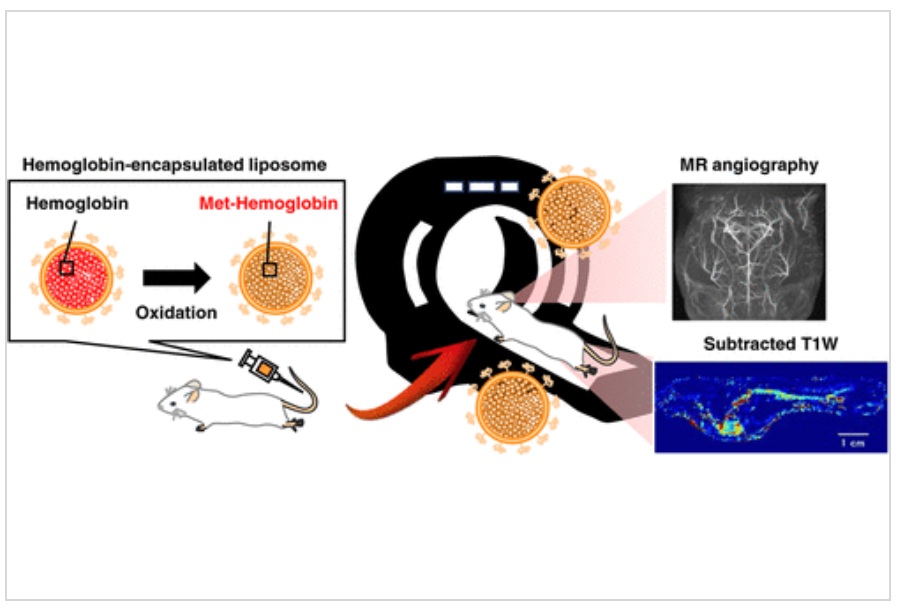Type Of Media:学術論文
Publication/Magazine/Media:ACS Applied Bio Materials
Author:Kazuaki Taguchi, Akira Sumiyoshi, Yuto Suzuki, Yoshikazu Ozawa, Megumi Iiyama, Shan Gao, Hiromi Sakai, Kensuke Osada, Kazuaki Matsumoto and Ichio Aoki*
Methemoglobin-Encapsulating Liposome: A Low-Risk Intravascular Contrast Agent for Magnetic Resonance Imaging
Hemoglobin shows different contrasts on magnetic resonance imaging (MRI) depending on the iron and oxygenation states of heme. Functional brain MRI utilizes the differences in the concentrations of oxyhemoglobin and deoxyhemoglobin in cerebral blood vessels; blood clots produce strong magnetic susceptibility effects. We hypothesized that methemoglobin (MetHb)-based nanoparticles can act as MRI contrast agents because MetHb levels in red blood cells affect relaxivity and are strictly regulated to <1% in the blood. Herein, we describe the synthesis of methemoglobin-encapsulated liposomes (Met-HbVs) as contrast agents for MRI. Met-HbV, with a size of approximately 200 nm, increased longitudinal relaxivity (r1) by 2.44-fold compared with hemoglobin-encapsulated liposomes in vitro. In contrast, the transverse relaxation capacity (r2) of Met-HbVs was similar to that of the hemoglobin-encapsulated liposomes. Owing to its relaxivity, Met-HbV enhanced the signal intensity on T1-weighted images and angiography, especially in the veins. Furthermore, deleterious biological responses were seldom observed after Met-HbV administration in mice with chronic renal failure. In conclusion, Met-HbV possesses potential as a vascular contrast agent in MRI for angiography, with advantages over gadolinium-based contrast agents in terms of safety for patients with renal failure. To the best of our knowledge, this is the first report demonstrating the potential of MetHb as a biomaterial for contrast agents in MRI.
http://doi.org/10.1021/acsabm.4c01451


